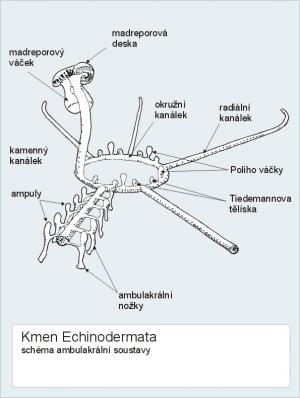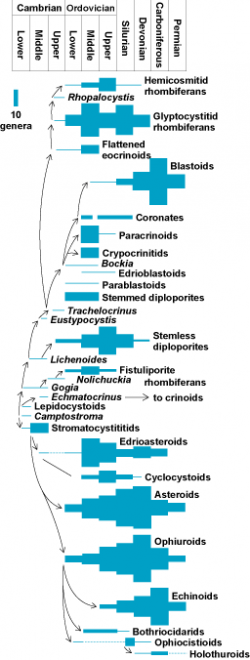Echinoderms
Echinoderms (Phylum Echinodermata) are a phylum of marine animals. Echinoderms are found at every ocean depth, from the intertidal zone to the abyssal zone. Aside from the problematic[vague] Arkarua, the first definitive members of the phylum appeared near the start of the Cambrian period.
The phylum contains about 7,000 living species, making it the second-largest grouping of deuterostomes, after the chordates. Echinoderms are also the largest phylum that has no freshwater or terrestrial representatives.
The word is derived from the Greek ἐχινοδέρματα (echinodermata), plural of ἐχινόδερμα (echinoderma), "spiny skin" from ἐχινός (echinos), "sea-urchin", originally "hedgehog," and δέρμα (derma), "skin".
The echinoderms are important both biologically and geologically: biologically because few other groupings are so abundant in the biotic desert of the deep sea, as well as the shallower oceans, and geologically as their ossified skeletons are major contributors to many limestone formations, and can provide valuable clues as to the geological environment. Further, it is held by some[citation needed] that the radiation of echinoderms was responsible for the Mesozoic revolution of marine life.
Source: http://en.wikipedia.org/wiki/Echinoderms | ||
Virtual museum of the Czech Geological Survey, www.geology.cz, (C) Czech Geological Survey, 2011, v.0.99 [13.12.2011]


![[ENG]](img/vlajka-cr.gif) Česky
Česky 

